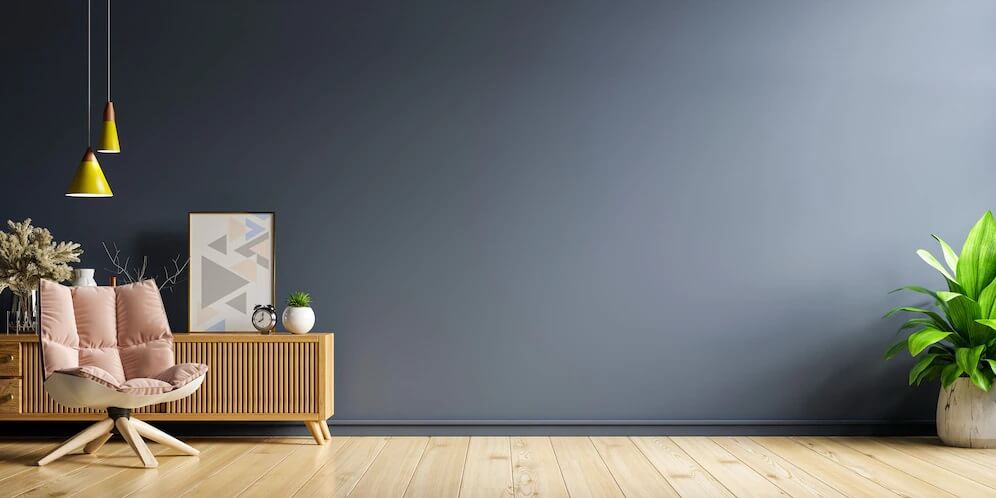What Does Soundproofing Foam Do?
If this is the first time you are soundproofing a house or office, you might have come across the term soundproofing foam, and you are wondering what does soundproofing foam do, right?
What is soundproofing foam?
Before you get into the detail of what soundproofing foam does, we need first to understand what is soundproofing foam.
Many people incorrectly or interchangeably refer to acoustic foam as soundproofing foam, so throughout this article, when we talk about soundproofing foam, we will be talking about acoustic foam.

Soundproofing foam is made from melamine or polyurethane foam core and used to absorb sound and correct the noise problem.
The foam comes in a variety of colors, thicknesses, patterns, and noise reduction coefficient ratings. It comes in different forms, such as corner bass straps, ceiling panels, ceiling clouds, ceiling tiles, and hanging baffles.
How does soundproofing foam work?
Before we dive into the intricacies of how the foam works, it’s vital we discuss what the foam does and doesn’t. Right off the bat, you should know that soundproofing foam doesn’t block sound.
While it’s associated with soundproofing and even known as soundproofing foam, you have to use it with other materials for you to create a noise-free room.
If you have shopped for soundproofing foams before, you must have realized that the foam comes in different patterns designed for various noise levels.
Some foams do well with voices, while others are exceptionally effective with music and street noise.
In acoustic foam, the foam’s energy is taken care of in two ways: the sound is spread out due to uneven surfaces on the foam.
Here the acoustic foam has an obvious pattern, but the foam is made from many little bubbles that further spread the sound wave.
The egg carton-like shape of the foam means that the sound waves reflect; hence, some are likely to hit the foam, causing it to spread out more.
The spreading out dampens the sound and diffuses it in the process.
The other way that the foam works is by absorbing the sounds. Here, the sound’s pressure wave is converted into the foam’s mechanical movement and the particles that make up the foam.
If you have ever held a balloon nearby loud music, you must have felt vibrations.
The same thing happens for the foam except that the foam now works like a shock absorber that further turns the mechanical vibration into a small amount of heat energy.
We can conclude that soundproofing foam works in two ways: it disperses sound, so no one spot is extremely loud and, at the same time, converts the sound energy into heat energy.
If you have a room lined with soundproofing foam, you will get even more sound dampening as the foam further absorbs the reflected sound.
If looking to fully soundproof a room, use hard flat sound-blocking walls, then line the insides with soundproofing foam.
Install the sound-absorbing foam when looking to absorb sound within a room.
Sound blocking foam
This is another type of soundproofing foam whose role is to prevent noise from traveling through walls. These foams have a closed-cell structure.
The foam is ideal when you have a problem with the sound coming through the walls and ceiling from adjoining parts of a building. The foam will block the noise from getting in.
For you to block out most of the noise, install the foam inside a wall construction.
Can you paint soundproofing foam?

As mentioned above, most people refer to acoustic foam as soundproofing foam. So when we are talking about painting soundproofing foam, we are essentially talking about painting acoustic foam.
As seen above, acoustic foam is made of an open-celled material that increases air resistance, which aids in controlling sound waves.
Similarly, the foam has a pyramid structure that breaks up a surface, making it harder for sound waves to bounce off it.
These qualities come in handy at improving clarity in a room.
Although, acoustic foam isn’t the most attractive material in the market, avoid painting it.
This is because the paint will completely coat the surface, which covers the small cracks and gaps designed to increase air resistance.
When you block these areas, it will be ineffective at reducing noises in high and mid-range frequencies.
You shouldn’t paint the foam because adding another layer of paint will make the foam stiff. This makes the foam reflect sound waves instead of absorbing it.
Due to these reasons, you should avoid painting soundproofing foam.
Instead of painting the foam, there are other alternatives you can use that will have less impact on the foam’s effectiveness.
One of the things you should do is to buy foam that you like. As mentioned above, soundproofing foams come in different colors.
When making your purchase, take time to find a color you like and blend in with the rest of the room.
For example, you can buy white soundproofing foam.
You can also consider painting a room a darker color. For example, if soundproofing a home theater, you want the room dark, so you may also paint the walls a darker color, right?
The darker color will make the soundproofing foam less obvious, so you won’t find the need to paint them.
Do you have a budget? Consider investing in acoustic panels. Specialist companies design acoustic panels for businesses such as restaurants and conference halls.
Since these are intended for public display, they are often much more attractive.
The panels are as effective as soundproofing foam, but better looking.
The only caveat with the panels is that they are a little bit expensive. They also aren’t as dedicated as studio-quality soundproofing foam.
You can improve the look of the soundproofing foam by covering it with a cloth.
The cool thing with using a cloth is that you choose any color or design you want, making the foam much less obvious. Doing so is also reasonably inexpensive.
To cover the foam with cloth, you need to build a simple wooden frame, stretch a piece of cloth over it, and place the foam inside it.
You should then seal up the other side with a piece of cloth, and you will have foam that is pleasing to the eyes.
What is the future of soundproofing foam?
The science behind soundproofing foam is evolving every day with new and exciting developments coming out.
The most recent foam in the market is the super quiet soundproofing that reduces the amount of material needed to soundproof a room.
The foam allows noise to pass in only one direction. This new feature has changed how soundproofing is done in commercial and domestic spaces.



